Android Tablet-based Kiosk: What Is It & How to Set Up?
In our everyday lives, we often see restaurant personnel using tablets to take client orders. Similarly, office employees and drivers in the logistics and transportation industries are issued Android tablets for official usage.
In order to limit employees and customers in different industries to business-related applications or websites, it is necessary to lock enterprise Android devices into Kiosk mode.
This article will describe two methods for configuring Android tablet Kiosks.
1 What is Android Tablet Kiosk Mode?
Android kiosk mode is a feature that allows IT admins to block unwanted apps and websites, restrict device access, and lockdown Android devices only to run approved apps and websites. It is divided into single-app and multi-app modes. Under kiosk mode, users cannot access other apps and settings, making the devices purpose-built for a specific use.
In Android tablet Kiosk mode, tablets are limited to single app/website or a pre-defined set of apps to prevent cyber risks and boost productivity by eliminating all unnecessary access.

Purposes
The basic purpose of adding Kiosk mode on Android tablets is to utilize Android tablets for specified tasks depending upon the user's needs.
Various kinds of Kiosks are available in different industries, each built with a unique interface and features to perform.
Android Kiosks are used in educational and healthcare industries for various tasks, and their uses are limited to learning and working purposes.
Similarly, other sectors use Android tablets and smartphones as Kiosks to smooth their transactions and perform business operations.
Settings Provided by Kiosk Mode
Single-app/Multi-app/Browser Lockdown
Kiosk mode provides the facility to apply single-app or multi-app mode on Android devices to limit the users only to those selected apps. Similarly, access to different browsers and web searches can also be customized using the Kiosk mode.
Custom Brand and Layout
Kiosk mode also helps in the advertisement of company brands. Some Kiosks are developed specifically to promote a brand or a product. Businesses can set an interface with a company theme or play a video to promote their products using a Kiosk mode.
Devices System Settings
The admin can manage the system settings remotely on the Kiosk devices. When Android kiosk mode is enabled, administrators have the ability to disable user access to settings and other device functionalities. They can choose to grant or restrict basic setting rights to the user, including Wi-Fi, hotspot, Bluetooth, volume control, and more.
2 How to Run an Android Tablet in Kiosk Mode?
There are two straightforward methods to run an Android tablet in Kiosk mode. One method is operational within the Android tablet or smartphone, while the other needs external software to manage the Kiosk mode. The uses of these two methods are different from each other. Let's get into them deeply to understand their importance.
Method 1. Screen Pinning Inbuilt Feature
Every Android tablet or smartphone has a built-in Screen Pinning feature in its Settings. This method is probably a temporary way used commonly at home when parents have to hand over their smartphones to their kids for a specific purpose. It enables the user to set a single-app kiosk mode and restrict the device to a singl-app unless it is un-pinned using a specific code selected.
Prerequisites
Before practically performing this operation, make it clear that it is only available on Android devices, mostly with Android 11. It is important to check the Android version to make it operational on any device.
How to Set It Up?
To enable screen pinning on an Android tablet or smartphone, follow the following steps:
Firstly, check the version of the Android tablet.
Go to “Settings” app on the Android device and then click on the “Security” tab. Then click on “Advanced” to select “App Pinning” or "Pin Windows".
Select a pin, password, or pattern to unpin or pin the screen.
Open the app that you want to run on the pin screen. Swipe it up to the middle of the screen and then click on the pin icon.
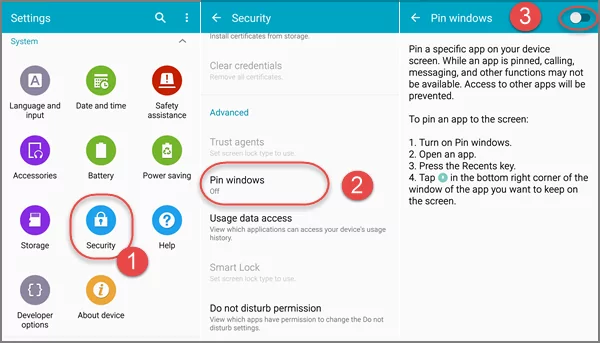
Why Is Screen Pinning Not Suitable for Business Purposes?
Businesses need a secure and permanent source for enabling Kiosk mode, while screen pinning is a temporary source with no security measures. Businesses need full security as they are attacked by expert hackers, so a secure system is always preferred.
In screen pinning, users still can have the option to access other apps beyond the app we have selected, and secondly, app can move to the background to access the notifications. Confidential data can be breached quickly, even in Screen Pinning mode. Hence, the corporate sector is never recommended to use this method.
How Do I Turn off Pinned Screen?
Here are simple steps to unpin the device from screen pinning:
You can use gesture, two-button, or three-button navigation to unpin the device.
If the pop-up appears to enter the code or pattern, enter the code or pattern set while enabling the screen pinning. Screen Pinning will disable instantly.
Another way is to move to “Settings” app and select “Security”. Then click on the “Advanced” tab and tap the switch to disable the screen pinning on the device. Enter the pin code to disable it.
Method 2. AirDroid Business MDM Solution
AirDroid Business MDM is an all-in-one solution for any business security and smooth working of various tasks. It is purposely built to support large organizations in keeping the Android devices used in the organization fully effective and managed. We can switch the devices into single-app mode(which allows you to lock Android tablet to one website/app); or multi-app kiosk mode to run only a few apps and customize the kiosk screen for brand promotions using Logos and themes of the company in the background. With this Android kiosk software, System Settings are efficiently configured remotely by the administrator.
Lock Android Tablet into Kiosk Mode with AirDroid Business
- Step 1.Log into Admin Console
- Sign up an AirDroid account and log into AirDroid Business admin console.
- Step 2.Device Enrollment
- According to the device enrollment guide, please add all the tablets you need to configure into kiosk mode to the dashboard of AirDroid Business and name the device group to facilitate subsequent management.
- Step 3.Set Up Kiosk Config Profile
- Navigate to the "Policy & Kiosk Config Files" tab and click "Create Config File." Choose "Kiosk" here.
- Click on the "Add App" icon to select the desired apps for the kiosk mode. You can navigate through the pages or use the search function to find the apps by name. (You can set up single-app mode(which allows you to lock Android tablet to one website/app); or multi-app mode) Once you find the required app, click the select button to add it to the kiosk mode. Click "OK" to finish adding apps to the kiosk.
- Now specify your Android tablet-specific settings in the "Device Limitation." You can provide users with the basic rights for Volume, Wireless Network, Cellular, Hotspot, and more. Click "Next" and give a name and remark to this Config File. Set up a secure code that will be used to exit the configuration. Click "Save and Apply."
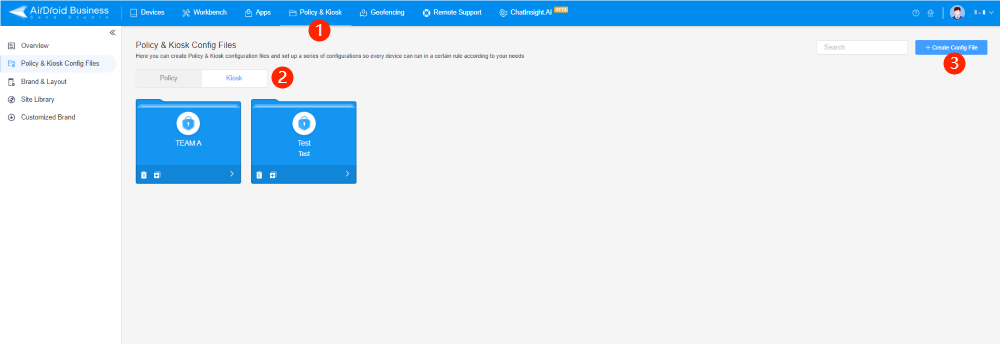


- Step 4.Finish Set Up
- To assign the kiosk settings to your Android tablets, find "Apply Config File to the following devices/groups." Tap on the "add" button and choose a device group. Once saved, the kiosk settings will be applied to all devices in the selected group. At the device end, the biz daemon app will automatically open and activate the kiosk mode. Your device will now function as kiosks with the configured apps and settings.
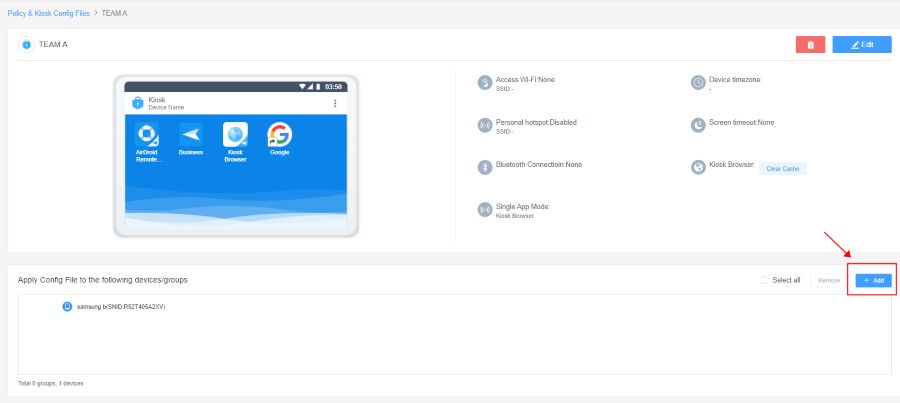
[Video Tutorial] Lock Android Tablet into Kiosk Mode with AirDroid Business
How to Lock Android Tablets Only Run Chrome Browser?
AirDroid Business enables the admin to select a single-app (Such as Chrome browser) to operate on an Android tablet in Kiosk mode, restricting the Home Screen and the Notification Center.
For Kiosk Launcher, Open the admin console of AirDroid Business and select “Policy and Kiosk”, Then click on “Policy and Kiosk Config File”.
Now press the Edit button from the screen and scroll downwards. Click on Kiosk Launcher and select “Single app”.
In the Select app box, select Chrome. Now set the time limit for Kiosk mode as “Keep Running” so that the Android tablet under Kiosk mode keeps restricted to Chrome app unless it is removed from the app allowlist.
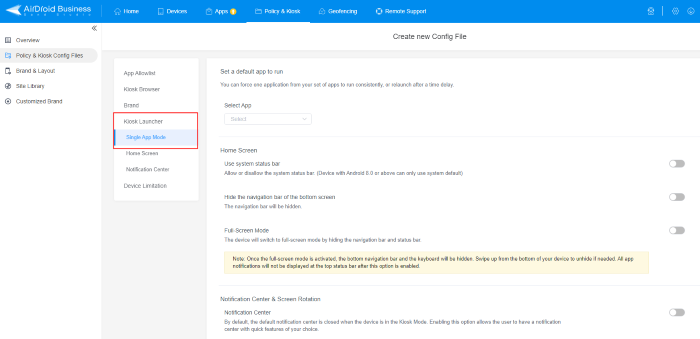
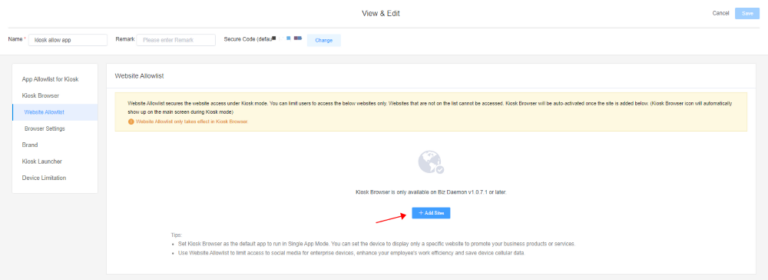
(If you want to lock Android tablet to one website, please first set "Kiosk Browser" as the default app to run in single app mode in AirDroid Business. Then you can set the device to display only a specific website to promote your business products or services.)
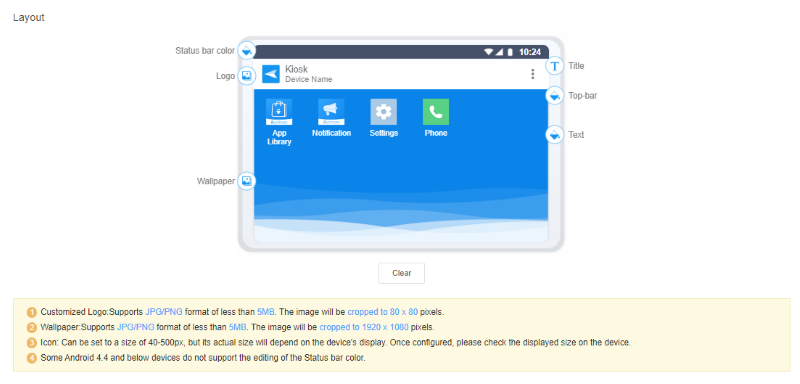
3 Best Practices of Lockdown Android Tablet into Kiosk Mode
Kiosk mode for Android tablet is beneficial in numerous ways depending upon the kind of industry we are involved. Here are three different industries and their best practices for lockdown Android tablets into Kiosk mode:
Quick-service Restaurants
In restaurants, self-service ordering kiosks simplify the ordering process. In fast-service restaurants, Android tablets are configured as self-ordering Kiosks so that consumers may place orders for rapid service.
Similarly, there are Android tablets set up in Kiosk mode to handle transactions and create invoices. Customers may order and get meals without interacting with workers. It aids in reducing mistakes and enhancing the user experience.
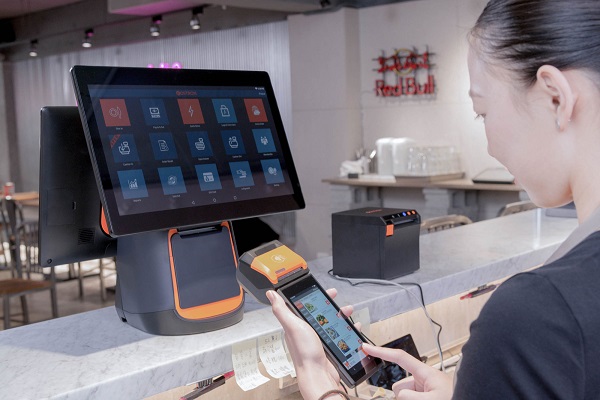
Retailers
Retailer’s deals with a large variety of products, including clothing, electronic products, grocery items, and many more. Android tablets are set up in electronic retails as a demo with Kiosk mode limited to only a few apps, especially the camera, so that the customers can view the camera result.
Moreover, there are Android tablets used to select the products and watch the variety and prices. They can also use those Kiosk devices to buy products and pay bills online. These Android tablets are only limited to retail services.

The Android tablets cannot perform any other function as they are set as purpose-built for a specific retail shop. Android tablets and smartphones are also helpful in engaging customers in contests, promotions, and marketing campaigns.
Hospitality
Hotels providing high-quality services use Android Kiosk tablets to save customers time for check-in and check-out. These Kiosk tablets can also help check the details of all the services that a specific hotel provides, like the type of rooms, prices, and other services.
With this Kiosk workload of the hotel management will be reduced, and secondly, the customer will also be satisfied with the quick and managed services of the hotel.
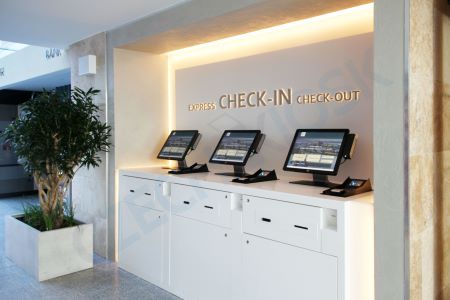
4 What Should You Consider Before Setting up An Android Tablet as a Kiosk?
Consider several necessary points before setting up an Android tablet as a Kiosk device. Let's discuss the five crucial points that need to be considered before setting up the Android MDM kiosk mode:
As Kiosks provide limited access, it's very important to focus on the first display on the Kiosk device. For example, in ATMs, the first display on the screen is a short introductory video of the bank and its basic information or includes the latest information about any promotion or service; after that user can access the account and perform further transactions.
Depending upon the Kiosk services and usage, guess an estimate of the number of users that need it at a certain time. Mostly one Kiosk device is operated by a single user at a time. There must be more than one Android Kiosk tablet in a restaurant to receive orders from the customers if there are many customers to deal with.
While using Android tablet Kiosks, it's obvious to know where to store the data. Mostly the Kiosk devices are connected online, and the data is directly stored in the database for further processing. So, before setting up Android Kiosk mode on tablets, it's necessary to finalize the data management process.
Many Android tablets in Kiosk mode are connected to a printer or external hardware to perform other operations like generating bills. Depending upon the use of the Kiosk, it's necessary to find out which hardware component is needed.
Screen time limit is set at various Kiosks to make it more secure. Hence it's better to estimate the time limit of the Kiosk screen each time it is used.
5 FAQs
Closing
The article describes two techniques for obtaining Kiosk mode on Android tablets, each with its significance. Screen Pinning is a built-in feature of Android smartphones that enables a single-app Kiosk mode, although it is only suitable for home usage where security is not an issue. The second alternative, AirDroid Business MDM, is preferable for businesses. It delivers considerably more than the screen-pinning feature's single-app Kiosk mode. Using AirDroid Buseinss, the mobile business is adapted and managed to satisfy all business requirements. In addition to the Kiosk mode, it offers a variety of other capabilities that enable mobile businesses.
INFOGRAPHIC
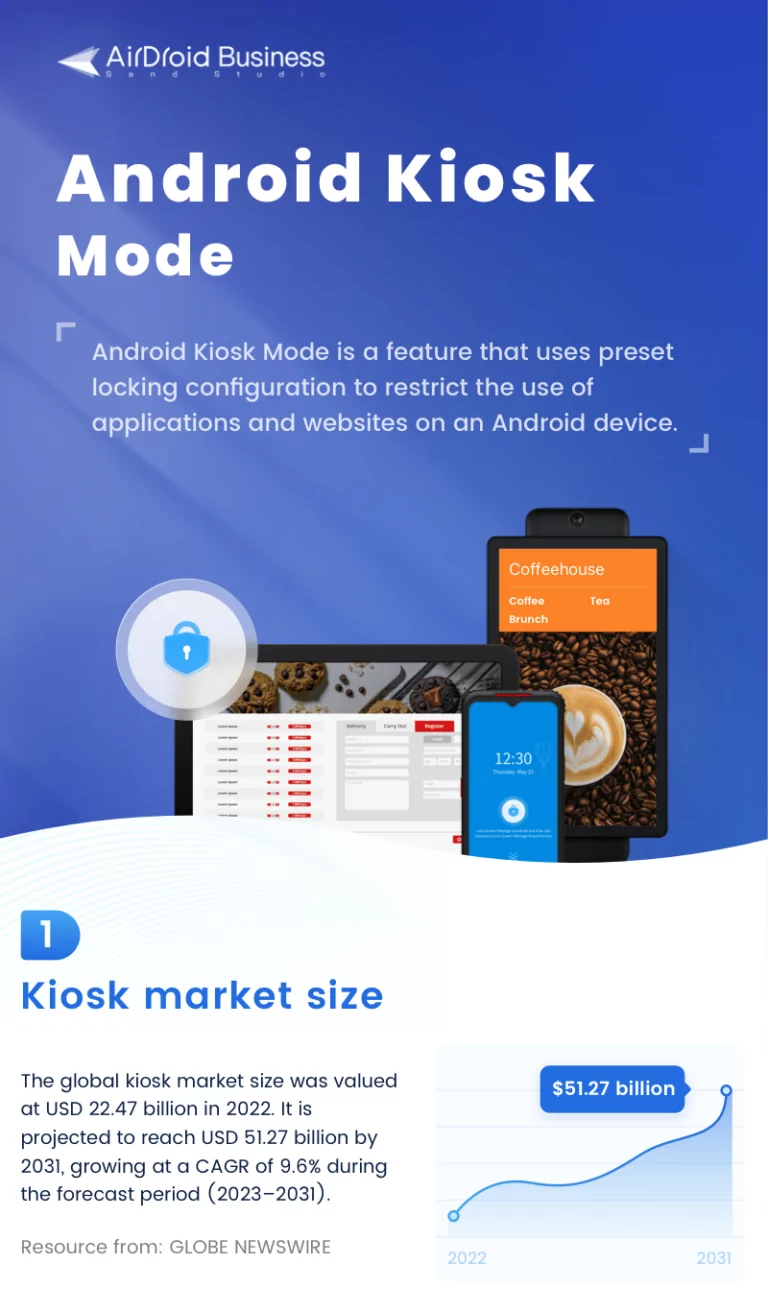
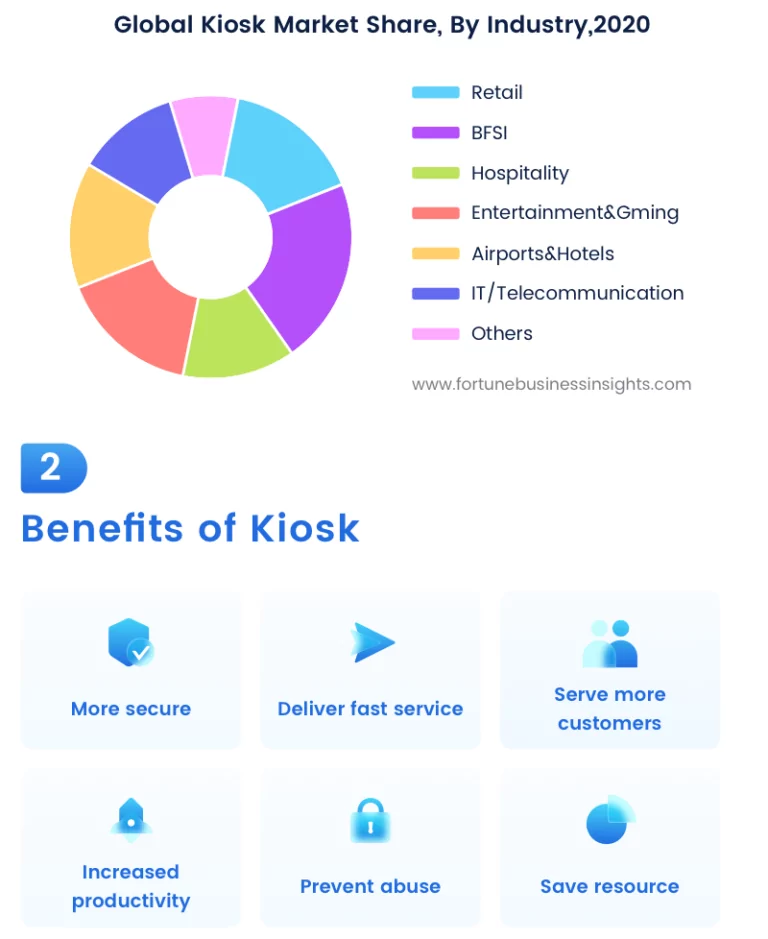
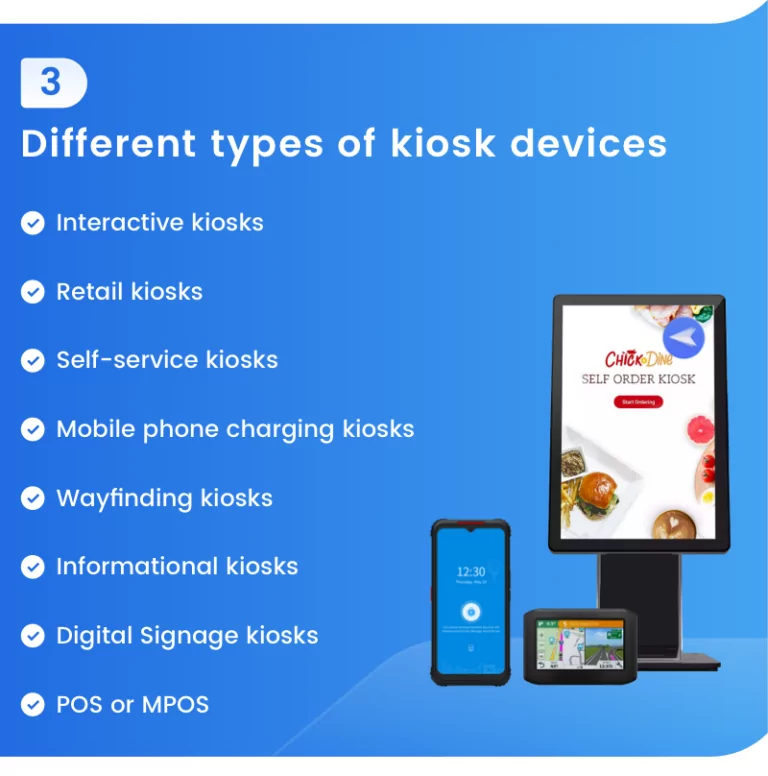
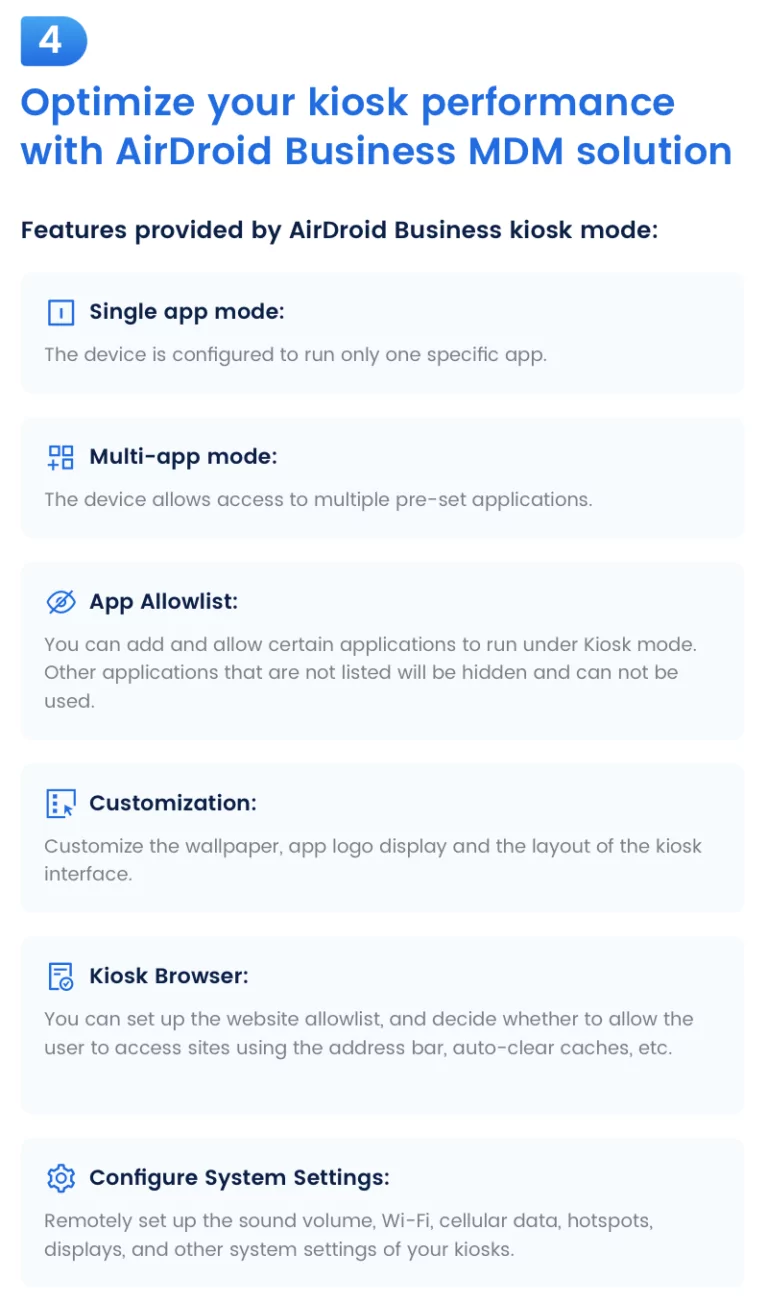
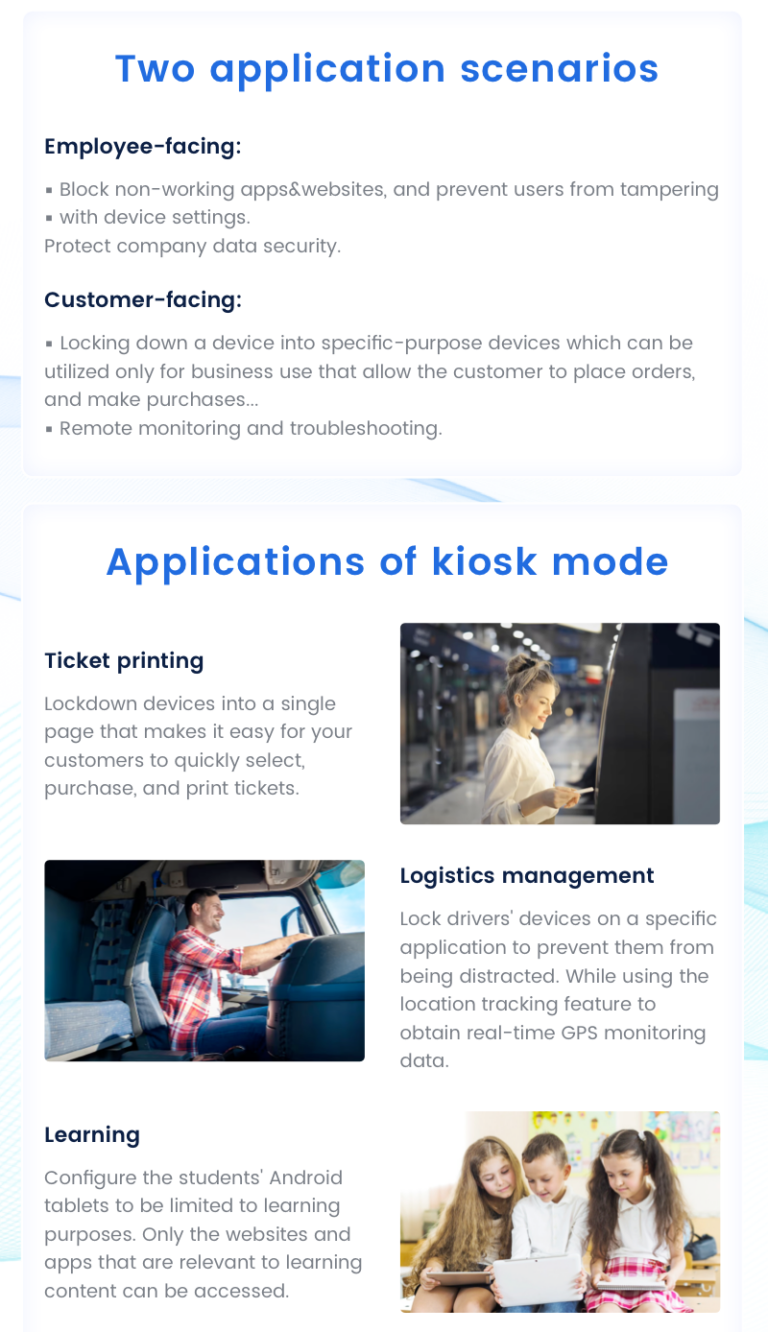
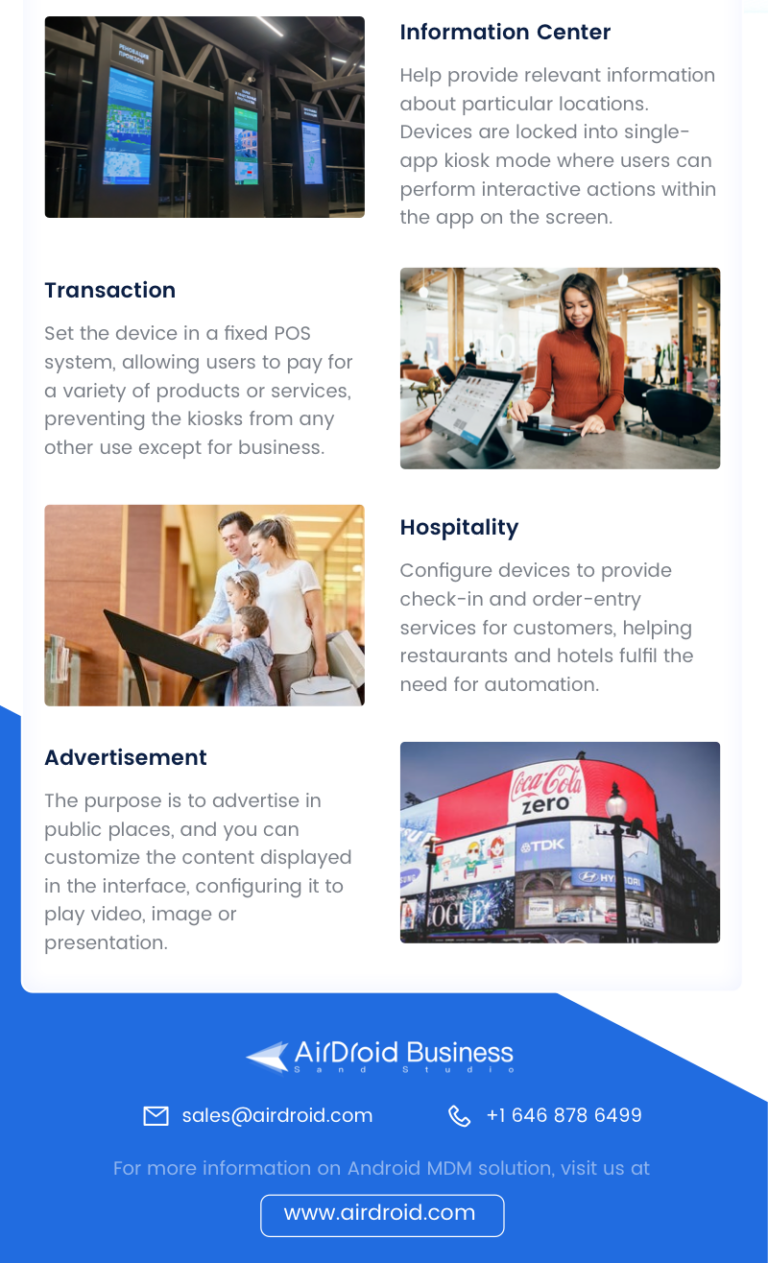
Leave a Reply.